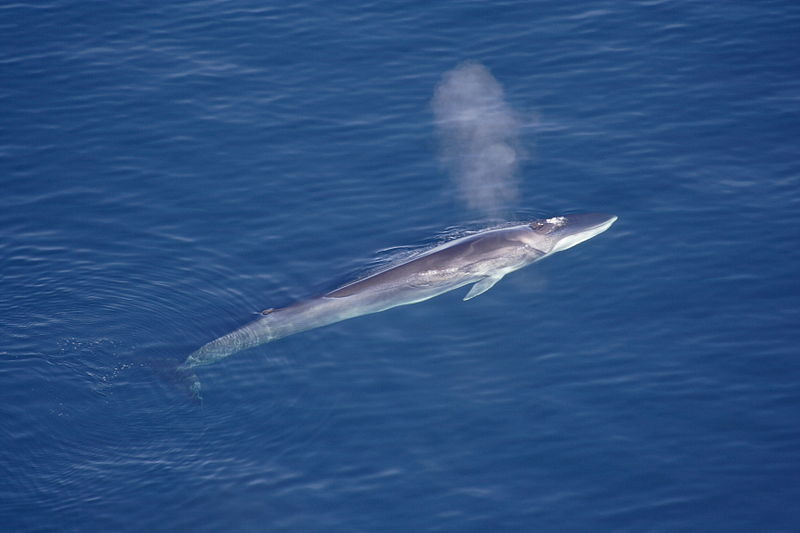As computer systems continue to improve, there is an increased ability to complete tasks using artificial intelligence. A computer system can be trained to perceive its environment, make decisions, and take actions. One of the methods for achieving this is machine learning (ML), where machines ‘learn’ tasks from without the need for explicit programming. Given sufficient training, ML can process large, complex datasets to reveal patterns.
Acoustics is one of the fields generating large amounts of data. For example, every time I deploy a hydrophone in the English Channel, it can record for 3 weeks and return approximately 250 GB of data! It doesn’t take long for the data to quickly add up to an overwhelming amount. Never mind the added challenge of searching through it for sounds of interest, such as fish and vessels. ML could provide the answer, if I could train the computer system to recognise these sounds and search the data for the presence. Similarly, ML could also greatly contribute to other types of acoustic research, like speech processing, sound localisation, noise mitigation, health monitoring, and so on.
But how do young acousticians (yes, I am still counting myself in this category!) learn how to develop and use ML tools? That is where the UK Acoustic Network (UKAN) comes in! The network contains several special interest groups, including one specially devoted to Early Career Researchers that holds an annual Summer School. This year, their aim was to provide training for early career acousticians to get to grips with ML tools. So I joined over 30 scientists at Gregynog Hall in Wales this week for the UKAN Summer School 2019 (#UKANSS19).
The week started with an introduction to Python. This was led by Dr Prasun Ray, a Strategic Teaching Fellow in Applied Mathematics at Imperial College London. Prasun took us through the fundamentals of programming and data analysis in Python, alternating between a mixture of seminars and interactive examples to put us through the paces. Although I haven’t used Python much since 2016, it was good to re-familiarise and get updated on what the software can do!
The ML classes were delivered by Dr Ramon Fuentes (Research Scientist at Callsign Ltd and Visiting Researcher at the University of Sheffield), who has previously applied ML for signal processing and the development of autonomous inspection systems. Although the mathematics of this went whooshing over my biological head, it was still interesting to learn some of the fundamental ideas that ML is built upon. Although anywhere Ramon speaks in the future might want to invest in some additional whiteboards…
Finally, we had a series of lectures on audio and speech applications of ML delivered by Professor Nilesh Madhu from Ghent University. In my opinion, these were the highlight of the week! Nilesh was an excellent speaker, expertly leading us from one topic to another with a strong storyline, a balanced level of detail, plenty of examples, and good humour. His own research focus is on signal detection, analysis and enhancement with application to mobile devices. Despite this seeming fairly different from my own work on the surface, it had a lot of deeper similarities. For example, the problem of recognising and classifying signals in challenging contexts will be particularly relevant to my “Decoding the Deep” project.
As well as generating ideas, the other great thing about this event was meeting people. All too often it is easy to get ‘stuck’ in your own research bubble, only speaking with or working alongside people in the same field. Whilst this can be a good thing, it is still good to step back every so often and look around – because that’s how ideas are born! UKAN exists to support and facilitate networking – and that was a strong highlight of this week. Living with 30+ acousticians for five days means that you never know when an interesting conversation will arise: over the breakfast table; during a lunch break; whilst trying out some casual archery; building a cardboard tower in a competitive team-building exercise; on a hike through the grounds; in a subterranean prison surrounded by the ghosts of past inmates… (not even joking). There were lots of opportunities for networking, bonding, and discussions throughout the week. I think everyone went home with some new contacts and friends, several of which I will be following up with over coming months.
Overall, a successful week for the UKAN Summer School 2019! The ECR Special Interest Group are planning to run another next year, along with some smaller events. Be sure to get in touch to register your interest, propose other events, or join the network!








 This PhD aims to quantify vessel collision risks for fin whales in the Bay of Biscay. Organisation Cetacea (ORCA), a cetacean conservation charity, has been utilising platforms-of-opportunity to collect cetacean sightings around the world since 2001. On-board observers collect data relating to effort, ship location / speed / heading, and whale sightings. The current project will both utilise ORCA’s long-term dataset and conduct fieldwork to collect additional data. Behavioural analyses will assess fine-scale behaviour of whales during vessel encounters, whilst density surface models will be used to identify high-risk areas.
This PhD aims to quantify vessel collision risks for fin whales in the Bay of Biscay. Organisation Cetacea (ORCA), a cetacean conservation charity, has been utilising platforms-of-opportunity to collect cetacean sightings around the world since 2001. On-board observers collect data relating to effort, ship location / speed / heading, and whale sightings. The current project will both utilise ORCA’s long-term dataset and conduct fieldwork to collect additional data. Behavioural analyses will assess fine-scale behaviour of whales during vessel encounters, whilst density surface models will be used to identify high-risk areas.
